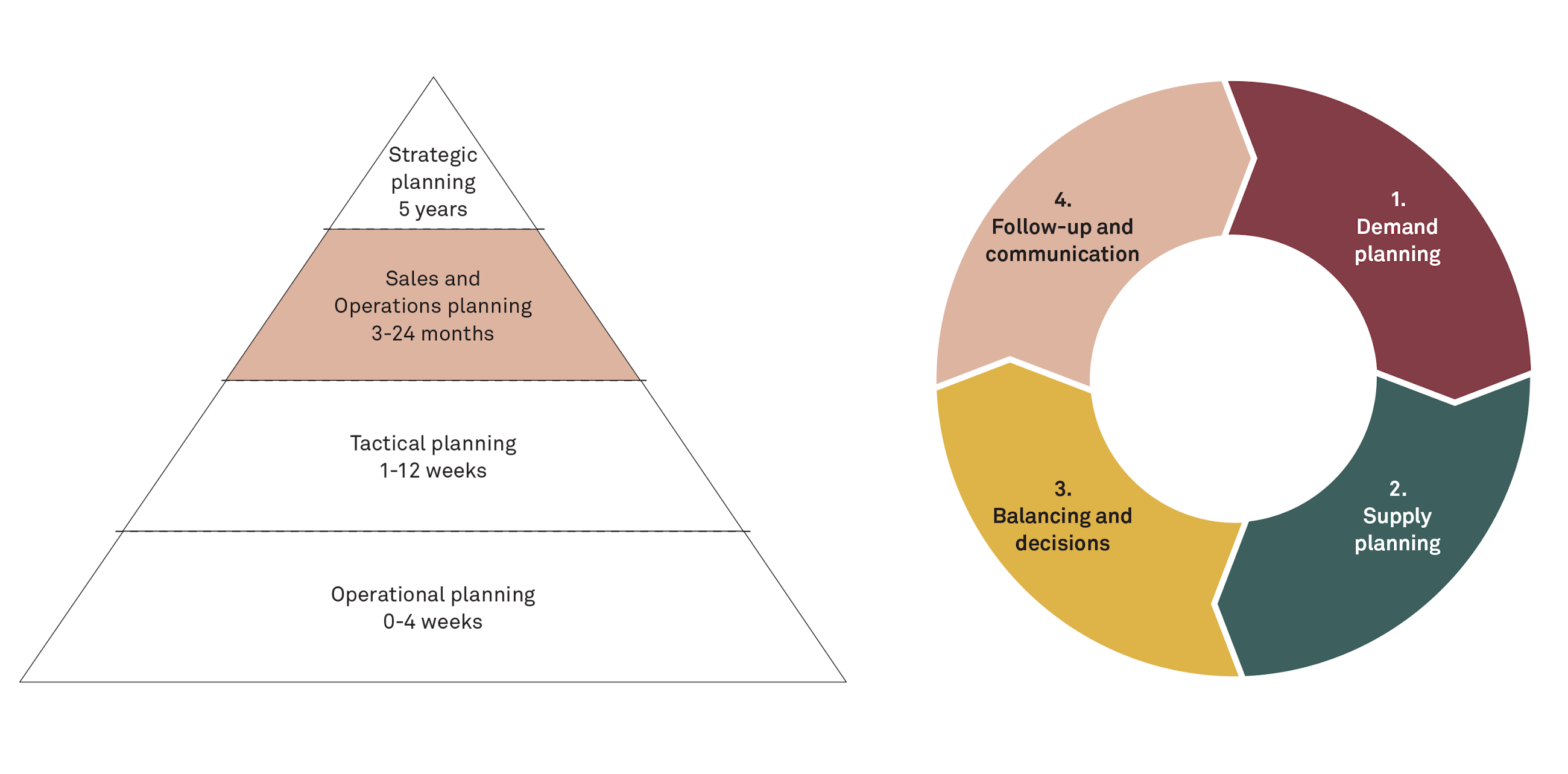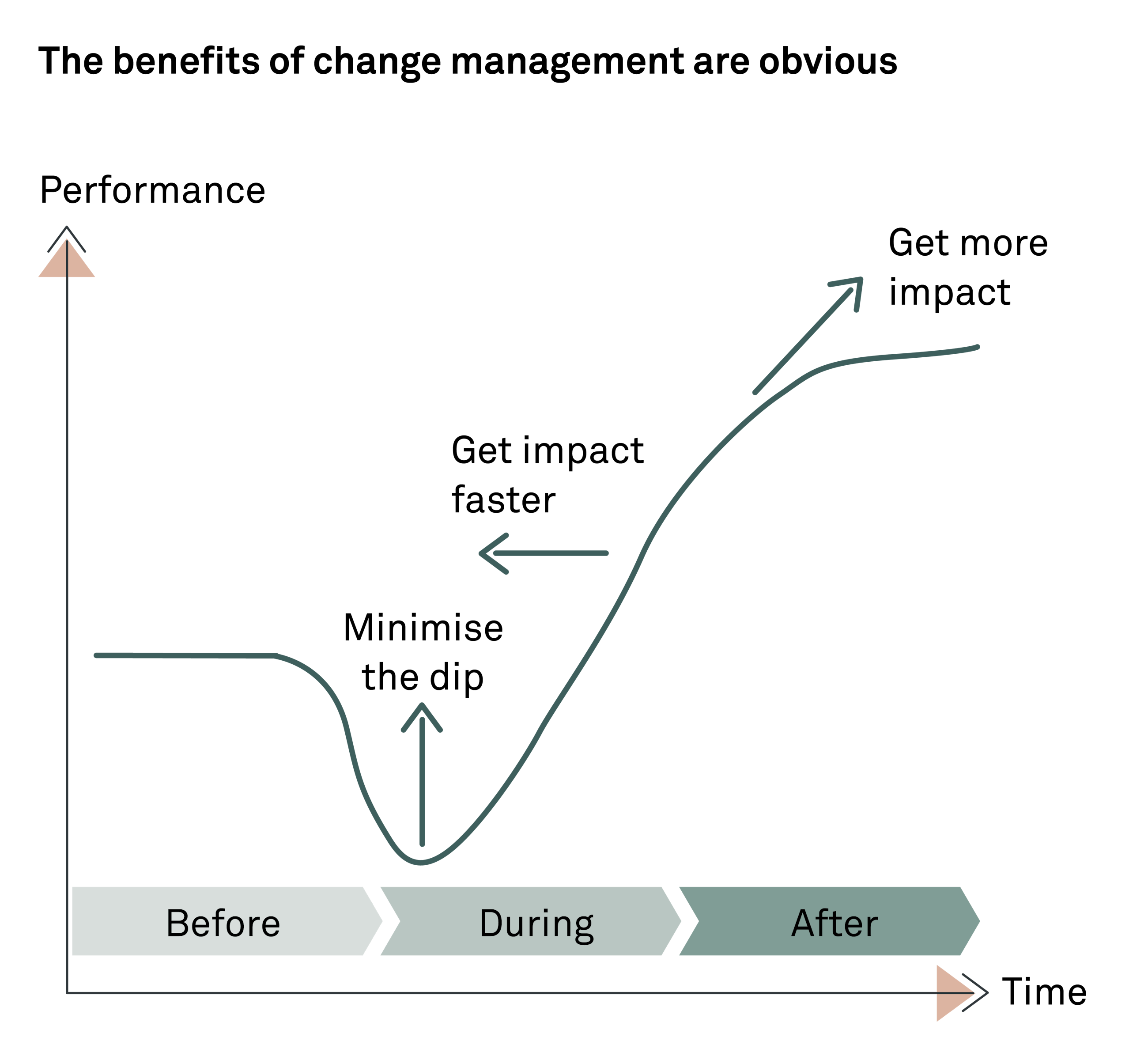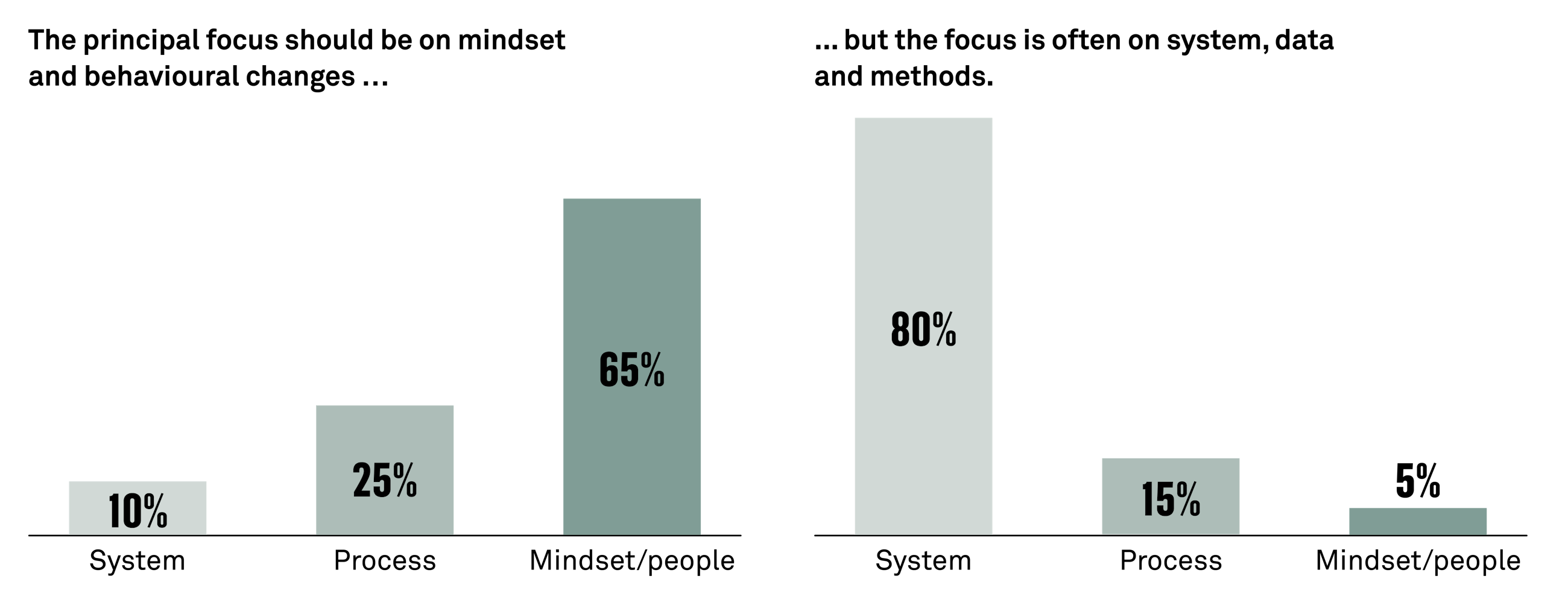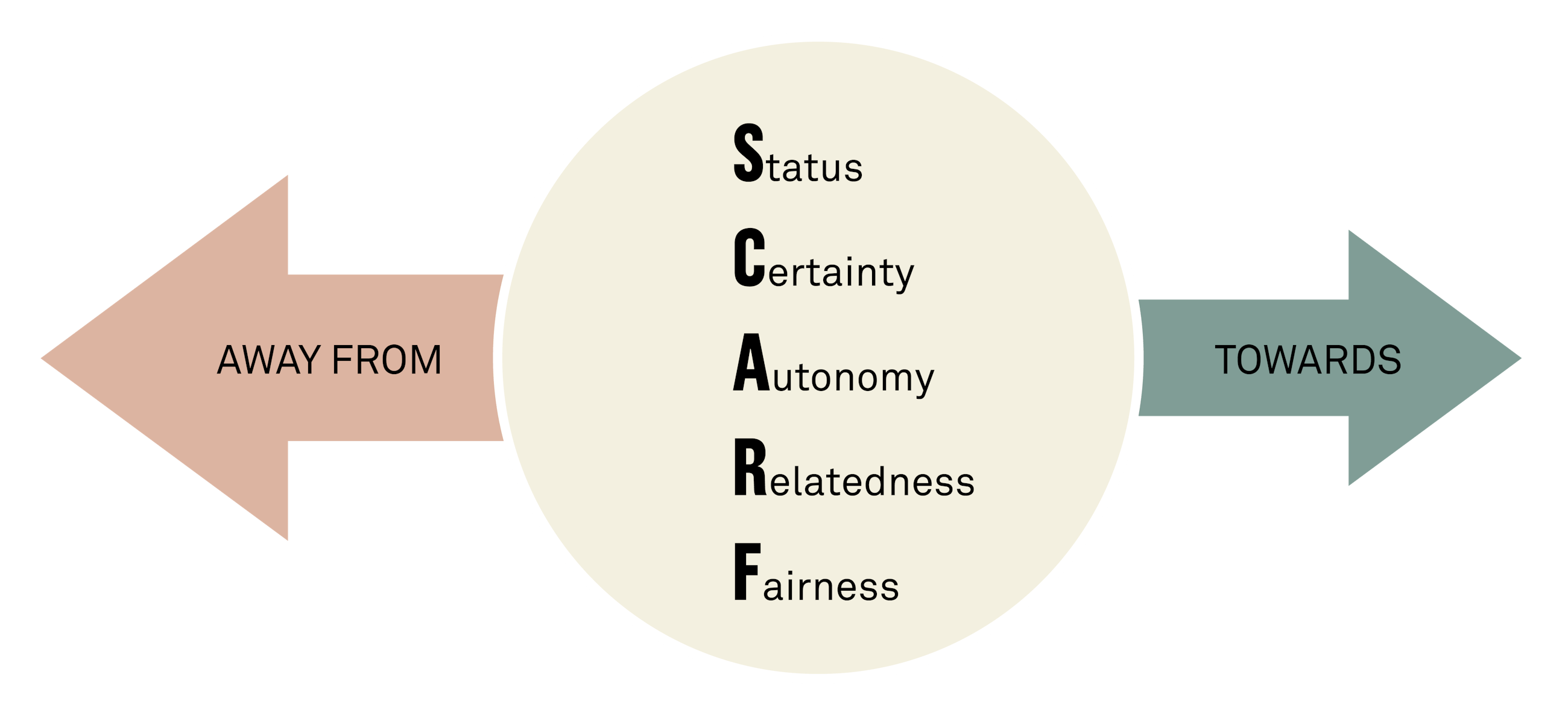Use change management to make your S&OP projects a success
30 October 2020
Change management is adding value – in S&OP projects as well
Most companies are keen to improve their planning processes so that they can assure short lead times and enhance delivery performance. At the same time, they want to retain agility if extraordinary opportunities should arise on the market and be able to make the best possible use of their capacity across production facilities.
Companies may also become aware that their supply chains are neither flexible nor scalable in relation to fluctuations or step changes in demand. This often happens because the S&OP process is not working well enough – or because it may not exist in the first place.
What is S&OP?
Sales and operations planning (S&OP) is the umbrella term for a range of decision processes designed to balance supply and demand as well as integrate planning in all areas of a company’s value chain, including customers and suppliers. Although the process is now frequently referred to as integrated business planning (IBP), I will use the term S&OP consistently in this article.
S&OP often has a decision-making horizon of 3-24 months, and it is the process that links together strategic, tactical and operational planning.
Typical symptoms we see when S&OP is not working well enough include:
Process-related symptoms:
- The company cannot react in time to changes in demand
- The company operates with a high level of firefighting
- The company has failed to convert strategic growth plans into operational planning
- The company has failed to clarify bottlenecks and capacity restrictions
Trust-related symptoms:
- The company has numerous plans pulling in different directions (plans in sales, marketing, product development, logistics, production, purchasing, finance ...)
- The company is experiencing a lack of trust between sales and production; for example, production may perceive that they cannot rely on the forecast, while sales notices that customers are not receiving their products on time. This leads to an unconstructive discussion about whose “fault” it is rather than a constructive prioritisation of business.
When companies are to solve problems like those listed above, an S&OP implementation/ improvement project is often initiated.
S&OP is a process that covers all areas of the business. This means that many stakeholders are involved in the process. When a company implements S&OP or wants to make a step change to the existing S&OP process, one of the biggest tasks facing the team has to do with handling all the different stakeholders, who inevitably bring different mindsets and different objectives to the table. When we carry out major implementation projects, it is obvious that the effect (the value) is highly dependent on whether we succeed in encouraging people to work according to the new processes and with the behavior that is required, preferably in a highly engaged way where they also get the desire and capability of working with continuous improvement after the project has been finalised. It is therefore essential to invest time in and maintain focus on the human side: PEOPLE! By focusing on change management, we can ensure that we unlock the latent potential faster and with greater impact.
In the period during which the change is being implemented, the result can often be a drop in performance because the process is not yet functioning optimally and because people are working more slowly and are not yet fully comfortable with the new ways of working. With high focus on change management activities, we can add more value by minimising (maybe even eliminating) this drop in performance, we can get impact faster and we can get more impact. Clearly, there are tangible benefits of change management when done successfully.
According to Tom Wallace, who is by many considered as one of the co-founders of S&OP back in the early 1980s, a disproportionate amount of emphasis is placed on the system aspect when we implement S&OP. It is, of course, essential to ensure data- and fact-based foundations for the decisions we make, so the system aspect is not insignificant. However, it is often the case that insufficient focus is devoted to creating engagement and motivation amongst the people working in and impacted by the process.
Four recommendations for making S&OP projects a success
Based on more than 15 years of experience with S&OP implementations, there seems to be a pattern in the successful S&OP projects that generate value and buy-in. So here are four recommendations that support this pattern:
1. Focus on generating effect
You must have a clear purpose for your S&OP project, and you must support the project with either a business case or an impact case. There should be no doubt about the benefits the project is to generate, and the project success criteria and deliverables must be linked to the business case/impact case. It is important to ensure that the impact case contains not only the harder commercial targets but also the softer behavioural goals. Moreover, the impact case should be linked to the strategic goals of the company so that it is clear to everybody how S&OP supports the strategy and what priorities are needed.
When implemented successfully, companies face large impact such as higher sales, improved lead times, improved delivery performance, lower inventories, better utilisation of production capacity, improved teamwork, improved communication, timely decision making as well as improved trust and relations.
2. Involvement in all areas
The two most critical roles are those of the senior management and the S&OP process facilitator.
The senior management should be involved and signal sponsorship and buy-in. This signals importance to the employees who will then be more engaged in the project. Senior management should also be actively involved in defining the purpose, the goals and the impact case.
The other important role is the S&OP process facilitator (sometimes there is more than one person in this role) who is passionate about S&OP and has the capacity to facilitate the process in all areas of the business and at all management levels. The best option is when the S&OP process facilitator is also the project manager of the S&OP implementation project.
When these two preconditions are in place, the implementation and the change task will become a lot easier. Not easy – but easier.
Moreover, it is crucial to make sure that the project team is made up of people who represent the entire value chain – representatives from sales/marketing, product management, production, purchasing and finance. The project should generate broad involvement through a range of workshops to ensure buy-in and awareness and to bring forward all the good input to be found in all parts of the value chain.
Research on work-related motivation (Deci, Olafsen and Ryan, 2017) shows that people are more engaged when they have influence on their job content and when there is a high degree of autonomy. Therefore, we want broad involvement so that people can influence the new ways of working in a way that makes sense for them.
3. Get started quickly
You can get the S&OP process started quite quickly without having all the elements in place, allowing the process and the project to run in parallel. This way, you will quickly start to generate learning and adjustments, and the parts of the effect will also come sooner. The design phase should be pilot based for a limited scope (product and/or geographical) and based on prototypes of templates, tools and dashboards. As one of my clients said: “Fail fast and learn from that”. The point, of course, is not to fail as such but instead to create a learning process fast and not develop something in the global “glass tower” that does not fit to reality.
4. The S&OP best practice method
You can apply the generic S&OP process that has proved well for many companies for decades as your starting point and then adapt it on the basis of the needs and organisation of your business. Use standard methods to analyse volatility and scalability. Use standards for KPI definitions. Use generic S&OP agendas and decision templates for the meetings in the process. Use an S&OP maturity model to evaluate current and future state and thus identify the themes in the improvement project. Start with the standard, learn from that and create adjustments to make it relevant in your company. This approach will get you 80% of the way, and it will be much quicker than when you start from scratch yourself.
Different activities are required to support the change phases
During its change journey, a project will inevitably pass through three phases. Before the change takes place, we are in a “current state” position. This gives way to the transition itself, followed by our arrival in the “future state”. We can also present the journey more simply: Before, During and After.
When we are in the current state, we know where we are, and this generates a sense of security. We are in our comfort zone, and the predominant feeling is “we know what we have”. If our current ways of working are perceived okay, we may experience resistance to change. However, if the current ways of working result in all kinds of obvious “fire-fighting situations”, we will often experience openness in relation to the change. In consequence, when we initiate an S&OP project, it can often be useful to start by establishing an overview of how the planning processes function in their current form so that it is possible to build on what already works well and to implement improvements in areas where the current process falls short.
During the transition, we may well experience stress and discomfort because we are unsure of what is to happen, and we may be concerned about whether the future will be better or worse than the current state. Different people will react in different ways, depending on the change experiences they are carrying with them. To manage the possible negative reactions towards change, there are different methods such as the SCARF model by David Rock (see model below) and the “Managing resistance levels” by Rick Maurer.
The future state is unknown, and new procedures may not be robust yet. We risk that the process is stagnating or even disappearing unless we work consciously to reinforce the new way of working. Training and ongoing evaluation are needed as well as follow-up on performance.
When working with change management, it is therefore common to link the change management activities to the three phases mentioned above by:
- Preparing the change (before)
- Leading the change (during)
- Reinforcing and retaining the change (after)
Before
Activities to prepare the change
Before the change, it is most important to secure sponsorship and make clear what effect(s) you are looking to achieve through the change. In addition, you need to understand how prepared your organisation is for change and establish the change strategy.
Change management tools
In the “before” phase of S&OP, I would like to highlight the following tools:
- Impact case.
- Mindset workshop and design star. Hold the mindset workshop with the sponsor group and with the managers and employees who will experience the greatest impact. Use the design star to plan the mindset workshop and use the impact case as a tool at the workshop.
- Change assessment: evaluation of the change task and the change maturity of the company in order to design the change strategy.
- Workshops and interviews to signal involvement and understand what works well in the current planning processes and systems.
During
Activities to manage the change
In this phase, it is crucial that you identify the extent and form of involvement required from sponsors, managers and employees. One aspect of this comprises role clarification and a clear communication and training plan. In this context, it is particularly important to understand which reactions (and, possibly, what resistance) you are likely to meet and how you can deal with them. It is rarely possible to predict all reactions and thus plan the entire change strategy in advance, so you need to allow space for ongoing evaluation of whether you need to initiate more or other change activities.
Change management tools
In this phase, I would like to highlight the following tools for S&OP:
- Level of involvement (make sure that people that are highly impacted are also highly involved throughout the project).
- Manage resistance (including SCARF), David Rock and Rick Maurer.
- S&OP games for awareness but also for training in the new process activities and role clarification.
- Training plans, including use of ADKAR to identify what training/ communication is significant for the different target groups.
- Design for smaller sprints so that the change does not become overwhelming and there is time for evaluation and adjustment.
After
Activities for reinforcing and sustaining the change
It is essential to ensure evaluation, feedback and ongoing improvements, for example through what is referred to as “the vitamin pill” (see box). In addition, it is important that you carry out posttraining if there are still some target groups that have failed to pick up the new ways of working. At this point, you should also follow up on success criteria and KPIs so as to establish whether the change has had the desired effect on both business and behaviour.
Change management tools
In this phase, I would like to highlight the following tools for S&OP:
- KPI dashboards with behavioural measurements.
- Monthly vitamin pill.
- Follow-up workshops to ensure focus and learning.
- Fixed onboarding activities for new participants. » Stakeholder management training for S&OP facilitators.
- Possibly play the S&OP game again to reinforce process and roles.
Alexandra Kristensson, S&OP Manager at Alfa Laval
The monthly vitamin pill
During my time as S&OP Manager at TDC in 2010-2012, I introduced the concept of the “monthly vitamin pill”. We spent the period 2008-2010 implementing S&OP, expanding the scope on an ongoing basis during these two years. We ran the process in parallel with the project, which generated a high level of attention from the senior management. As the process was to run “on its own”, I quickly realised that we would have to improve and develop it continuously, otherwise it would lose its focus.
I therefore introduced an S&OP whiteboard inspired by the lean concept, which we in the S&OP core team used every week for purposes such as identifying problems and putting forward solution proposals. In this context, a regular feature was to implement one improvement every month to ensure that the process was constantly being assessed and improved.
This is an idea I have transferred to most of the S&OP projects I have worked on subsequently as a consultant. I have observed that the S&OP process seems to stagnate or even deteriorate in many enterprises and has lost its relevance because the team has failed to maintain focus on ongoing improvement or has not kept up with developments taking place within the business or the market.
Henry Ford
S&OP is all about people
S&OP is a decision process, and decisions are made by people. People therefore play an important role when we implement S&OP, and even though the process is highly fact-driven, we should not underestimate the change management assignment.
I recently stumbled over a quote from Henry Ford regarding teamwork, and I think it nicely summarises S&OP. S&OP is teamwork not only in all areas of the process work, where different planning roles are required to work bottom-up, but also in the decision work itself, where the senior managers often have to make trade-offs between customer experience and costs.
In this article, I have shared some examples of how you can work consciously with change management in your S&OP improvements. You can also use many of these tools in the “AFTER” work to reinforce the behaviour and the effects of S&OP. I would like to wish you the very best of luck with your work. This is the part of S&OP that is the most fun.
References
Deci, E. L., Olafsen, A. H., & Ryan, R. M. (2017). Self-Determination Theory in Work Organizations: The State of a Science. Annual Review of Organizational Psychology and Organizational Behavior, Vol. 4, 19-43.
Maurer, Rick (2016). Online white paper “The Challenges of Change”, http://www.energybartools.com/images/
The-Challenges-of-Change-White-Paper.pdf?v=2.0
Rock, David (2013). TEDx talk, “Learning about the brain changes everything”
https://www.youtube.com/watch?v=uDIyxxayNig
Wallace, Tom (2012). “Change Management – The most important task in making S&OP successful”, DILF Orientering, Juni 2012.
Wallace, Tom (2012). Speech on S&OP, DILF Planning Conference, Copenhagen 14 Nov 2012.











